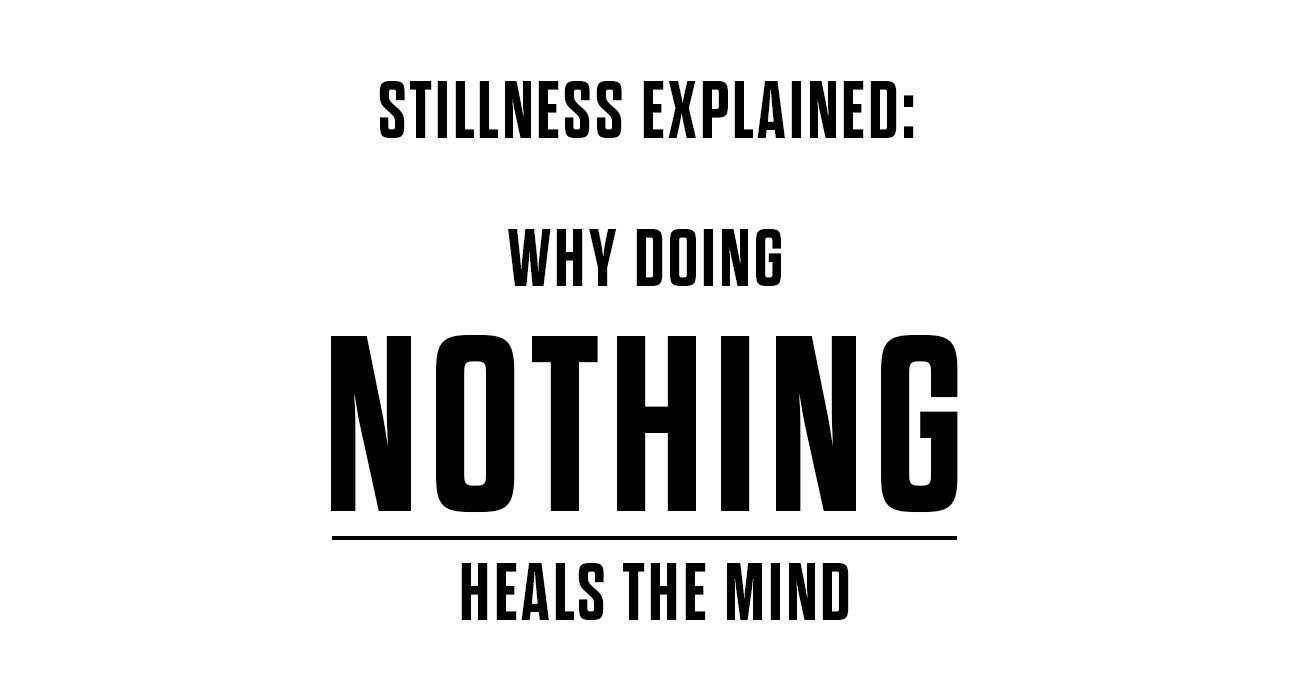What if productivity is the new burnout— and stillness is the cure we keep avoiding?
A few months ago (13th August, 2025), THE WEEKS US reported a growing workplace phenomenon called “Quiet Vacationing”. 41% of the employees have admitted that they secretly take time off or goes to the vacation while pretending to be online, scheduling fake emails, using auto responders and keeping their status active by staying logged in, just to avoid being called lazy for taking real rest in a culture where even relaxation demands camouflage, stillness has become a guilty pleasure rather than a human necessity.
We have turned busyness into a badge of honour- the fuller the calendar, the fuller the life. We squeeze podcasts into commutes, check emails during lunch, attend meeting calls during family time and glorify it as “multitasking” or “the art of balancing life”. But beneath the glittering crown of productivity and colour-coded to-do lists, the mind quietly waves a white flag- overworked, under-rested and still told it isn’t doing enough.
Stillness isn’t retreat; it’s cognitive recovery in action. A systematic review study conducted by Davide Donelli, Davide Lazzarone, Matteo Rizzato and Michele Antonelli used the Polyvagal theory and highlighted how the autonomic nervous system supports emotional regulation and adaptive physiological responses. The study yielded 511 results and 37 studies.
Research shows that silence and stillness are not mere idleness: inner silence activated the central vagus promoting social engagement and reducing stress, while outer silence can initially heighten alertness but, with practice, fosters the same restorative effects. Thus, stillness functions as cognitive recovery and emotional regulation, helping the mind and body recalibrate in response to overstimulation (Donelli, Lazzeroni, Rizzato, & Antonelli, 2023).
When Stillness Becomes a Shocking Experience
Picture this – You’re in a bare room, no phone, no music, no distractions. The only choice? Sit and think, or push a button and get a mild electric shock. Guess what, more than half the men did? They hit the button. One man reportedly pressed the shock button 190 times. Yes, u heard it right. According to TIME, a new study published in the journal Science found that many people prefer administering mild electric shocks to themselves to being left alone with nothing to do but think for six to 15 minutes. This experiment isn’t simply comedic, but it underlines our deep fear of silence and the urgent need for intentional stillness.
Read More: How to Stay Focused in a World Full of Distractions
The Psychology of Stillness
In a glorified world of constant motion, stillness is the brain’s silent rebellion, a psychological and neurophysiological state where the brain transitions from directed effort attention to restorative spontaneous awareness. Continuous sensory stimulation and cognitive effort engage the prefrontal cortex and locus coeruleus-norepinephrine system, leading to directed attention fatigue and reduced executive control.
The Attention Restoration Theory proposes that exposure to low-demand, gently engaging environments replenishes this capacity, allowing the inhibitory systems to rest, just like a computer cooling after overheating, the brain restores its efficiency in silence. Simultaneously, parasympathetic activation promotes calm, whole intrinsic neural networks like the default mode network reemerge to integrate experience and motion.
Extended stillness, particularly during sleep, further enhances glymphatic clearance, just like stirred water gets cleared only when it’s left undisturbed for a while, detoxifying the brain at a cellular level. Thus, psychological stillness bridges mind and body – it is the state where mental order, physiological balance and neural renewal converge.
Read More: The Psychology of Rest: Why You Feel Guilty Doing Nothing
The Silence We Avoid
We hurry; we stay busy and keep our calendars full with just “what if” ticking inside our minds – what if I miss out? What if this chance becomes the turning point of my life, and what if I slip behind in this era of rat race, where people often believe that “Life is a race, agar tez nahi bhagoge to koi tumhe kuchal kar aage nikal jayega.” (Life is a race, if u don’t run fast enough, someone will trample and overtake you). That’s exactly what fear of stillness is, driven by the twin engines of FOMO and performance anxiety.
| STATE | SENSORY INPUT | BRAIN ACTIVITY | EMOTIONAL IMPACT | COGNITIVE OUTCOMES |
| Constant Stimulation | High | Overactive And Fragmented | Anxiety, Irritability | Burnout, Poor Focus |
| Intentional Stillness | Low | Restorative And Integrated | Calm, Clarity | Memory Recovery, Insight |
Ancient Wisdom and Modern Mind: Where Dharma Meets Dopamine
Yoga’s ancient wisdom saw this clearly: first pratyāhara (turning inward), then dhyāna (stable meditation), are ways to navigate from sensory excess into deep self-regulation. Neuroscience today finds the same route: when we slow down, the prefrontal cortex finds the strength, the amygdala quiets, and the default-mode and executive network resets. Small experiments have shown that even 10 minutes of mindful breathing lowers cortisol, improves attention and changes brain connectivity. Stillness doesn’t erase the noise; it teaches us how to listen beneath it. Here are some grounded yet creative ways to invite stillness into everyday life backed by both research and timeless wisdom.
- Neural micro breaks: Take 60-second pauses of absolute nothingness – no phone, no thoughts to chase and no targets to achieve. These micro-breaks or “neural pit stops, supported by studies on attention restoration (Kaplan,1995), help the prefrontal cortex recover from cognitive overload, improving focus and emotional regulation.
- Digital Pratyāhara: Try one hour of sense withdrawal from daily life – no music, no conversations, no screentime. Research shows that even 15 minutes of outer silence reduces sympathetic arousal and enhances parasympathetic dominance.
- Inner sound tuning: Sit and try to focus on the sounds around and within. It strengthens the thalamocortical pathways, quiets the amygdala and enhances interoceptive awareness.
- Micro nature immersion: Spend at least 10 minutes and observe micro details in nature – a leaf, a cloud or maybe a rock. As per Attention Restoration Theory (Berman et al.,2008), such “soft fascinations” restore directed attention and reduce mental fatigue.
- Say no to multitasking: Do one task at a time – with full awareness and focus, be it eating, reading or writing. The rebalances dopaminergic reward circuits, enhances executive control, and counteracts the restless pull of multitasking.
Read More: Power of Solitude: How Alone Time Boosts Mental Clarity & Emotional Health
| Dimension | In a Noisy Mind | In a Still Mind | Psychological Impact |
| Sensory Input | Continuous bombardment of sounds, screens, and notifications | Controlled, minimal sensory exposure | Reduced overstimulation allows the nervous system to recalibrate |
| Brain Network Dominance | Task-Positive Network (constantly doing, achieving) | Default Mode Network (reflecting, integrating) | Balanced between action and introspection is restored |
| Emotional Regulation | Amygdala hyperactivity-heightened anxiety and irritability | Amygdala quiets down-emotional stability returns | Improves tolerance to uncertainty and emotional clarity |
| Attention Span | Fragmented, reactive, Novelty-seeking | Sustained, deliberate, reflective | Enhances focus and decision-making |
| Perception Of Time | Feels rushed and compressed | Feels expanded and spacious | Promotes mindfulness and patience |
| Neurochemical State | High dopamine-low serotonin-reward fatigue | Balanced dopamine-serotonin-calm motivation | Supports mental recovery and intrinsic satisfaction |
The Pause That Heals
Stillness is the brain’s way of breathing. It isn’t about escaping the chaos but standing calmly within it – like the quiet eye at the centre of a storm. When we pause, neural rhythms synchronise, and our attention quietly repairs itself. Each pause in sensory overload allows the neurons to reconnect and the mind to reimagine. In slowing down, we don’t lose progress; we rediscover purpose.
References +
Kaplan, S. (1995). The restorative benefits of nature. Journal of Environmental Psychology.
Ariga & Lleras (2011). Brief and rare mental breaks keep you focused. Cognition.
Berman et al. (2008). The cognitive benefits of interacting with nature. Psychological Science.
Donelli, D., Lazzeroni, D., Rizzato, M., & Antonelli, M. (2023). Silence and its effects on the autonomic nervous system: A systematic review. In Progress in Brain Research (Vol. 280, pp. 103–144). Elsevier.
McGrath, J. (2014, July 7). Study: People prefer electric shocks to sitting and thinking for 15 minutes. Philadelphia Magazine.
Keim, B. (2014, July 3). Men would rather give themselves electric shocks than sit quietly. Ars Technica.
Rao, D. (2025, August 13). ‘Quiet vacationing’: A secret revolt against workplace culture. The Week US.
Muradov, R. (2021). On doing nothing: Finding inspiration in idleness. Chronicle Books.













Leave feedback about this